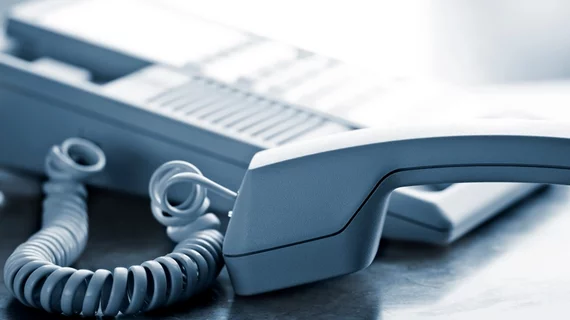Radiologists reduce time spent on noninterpretive tasks by 70% with communication support
Having a team of imaging service navigators (ISNs) to assist with noninterpretive tasks can improve radiologists’ workflows and allow them to reclaim a significant amount of their reading time.
A new paper published in the Journal of the American College of Radiology details how the recent deployment of ISNs at a large multi-disciplinary institution resulted in close to a 70% reduction in the amount of time radiologists spent on noninterpretive tasks. This came despite the number of communications increasing throughout the trial process.
ISNs are compiled of team members who assist radiologists in a slew of noninterpretive tasks, such as communicating with referring providers, technologists, IT and administrative personnel. Having this support allows radiologists to have more uninterrupted interpretation time and has been linked with a 12% reduction in error rates in prior research, authors of the new paper reported.
“With healthcare institutions experiencing increasing clinical and diagnostic imaging volumes, many radiologist groups have added support resources to assist in handling noninterpretive tasks. At a minimum, this support typically consists of a team of personnel who can be contacted by radiologists when they need to contact other people either directly via phone or indirectly through paging, messaging, or email,” corresponding author Stefan Johnson, MD, of the Imaging Institute at Cleveland Clinic and co-authors explained.
After implementing ISNs at their institution, Johnson and colleagues surveyed radiologists who were impacted by the system to gauge its effect on communication rates, workflow efficiency and job satisfaction.
During this time, communication rates increased overall by 49%, with the most notable differences pertaining to urgent and actionable findings. Prior to the availability of ISNs, radiologists reported spending around 39 minutes of their day on communication tasks and just 33% felt that the related processes were efficient. Post-ISNs, radiologists had shaved 28 minutes from their time previously dedicated to communications, which resulted in 82% of those surveyed feeling satisfied with workflow efficiency.
The authors of the study suggested that their findings support the use of ISNs as a support tool for radiologists, noting that doing so “can have positive effects on patient care and physician satisfaction by increasing the rates of communication while reducing the time and burden associated with these tasks.”
To learn more, click here.

